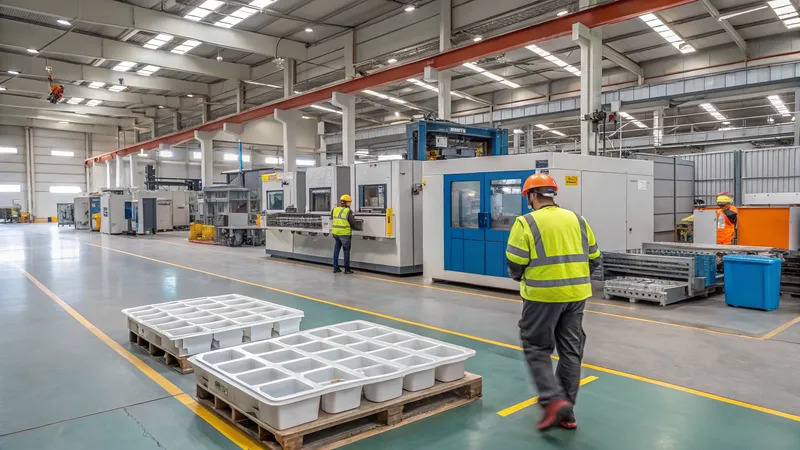Plastic vacuum forming is a versatile manufacturing process1 that shapes heated plastic sheets over molds using a vacuum, creating lightweight, cost-effective parts for industries like packaging, automotive, and medical.
Vacuum forming uses heat and suction to mold plastic sheets2 into precise shapes, offering an affordable solution for custom parts in packaging, automotive, and industrial applications.
Belgium, with its robust manufacturing sector, hosts several top-tier vacuum forming3 factories. This article explores the leading five, their services, and the technology behind vacuum forming, helping you understand its applications and benefits.
Vacuum forming is a cost-effective manufacturing process.True
It uses inexpensive molds and is ideal for low to medium production runs, reducing overall costs.
Vacuum forming is only suitable for small parts.False
It excels at producing large parts like machine covers and automotive components, not just small items.
- 1. Who Are the Top 5 Plastic Vacuum Forming Factories in Belgium?
- 2. What is Plastic Vacuum Forming?
- 3. What Are the Steps in the Vacuum Forming Process?
- 4. What Are the Key Factors in Vacuum Forming?
- 5. What Are the Applications of Vacuum Forming?
- 6. How Does Vacuum Forming Compare to Other Methods?
- 7. Conclusion
Who Are the Top 5 Plastic Vacuum Forming Factories in Belgium?
Belgium’s vacuum forming industry thrives on innovation and quality. Here are the top five factories, renowned for their expertise and diverse offerings.

Belgium’s top vacuum forming factories—BTL Plastics, Vitalo Group, AB Flexibles, ABS Plastics NV, and C.M.K. Kunststoffen—deliver high-quality, custom plastic solutions4 for global industries.
| Factory Name | Location | Year Founded | Employees | Main Services |
|---|---|---|---|---|
| BTL Plastics | Wielsbeke, Belgium | 2002 | 21-100 | Thermoforming for industrial vehicles, machine covers |
| Vitalo Group | Meulebeke, Belgium | 1936 | 501-1000 | Thermoforming for insulation solutions |
| AB Flexibles | Kuurne, Belgium | Not specified | 31-100 | Vacuum forming packaging, thermoforming5 films |
| ABS Plastics NV | Zedelgem, Belgium | 1968 | 51-200 | Vacuum forming |
| C.M.K. Kunststoffen | Hamont-Achel, Belgium | 1995 | 51-200 | Thermoforming, injection molding |
BTL Plastics
Located in Wielsbeke, BTL Plastics specializes in parts for industrial vehicles and machinery, leveraging automation for precision and efficiency.
Vitalo Group
Based in Meulebeke, Vitalo Group excels in thermoforming plastics and foams for acoustic and thermal insulation, serving industries needing advanced material solutions.

AB Flexibles
In Kuurne, AB Flexibles focuses on packaging, offering thermoformed films and vacuum-formed solutions tailored to client needs.
ABS Plastics NV
Operating from Zedelgem since 1968, ABS Plastics NV provides reliable vacuum forming services with decades of expertise.
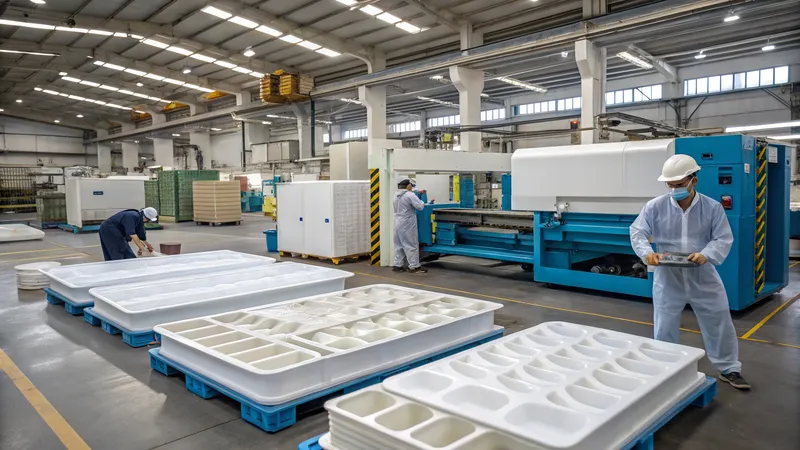
C.M.K. Kunststoffen
Located in Hamont-Achel, C.M.K. Kunststoffen combines thermoforming and injection molding for versatile manufacturing options.
All top Belgian vacuum forming factories focus solely on packaging.False
While some like AB Flexibles specialize in packaging, others like BTL Plastics and Vitalo Group serve industrial and insulation sectors.
What is Plastic Vacuum Forming?
Vacuum forming is a cornerstone of modern manufacturing, offering flexibility and efficiency.
Vacuum forming heats thermoplastic sheets, shapes them over molds with a vacuum, and cools them into durable parts for diverse applications.

Common Materials Used
Common thermoplastics include:
-
ABS: High impact resistance for automotive parts.
-
HIPS: Economical for packaging.
-
PE: Durable for containers.
-
PP: Chemical-resistant for medical uses.

-
PVC: Versatile for displays.
-
Acrylic (PMMA): Transparent for signage.
-
Polycarbonate (PC): Strong for safety shields.
| Material | Key Property | Typical Use |
|---|---|---|
| ABS | Impact resistance | Automotive components |
| HIPS | Cost-effective | Packaging trays |
| Polycarbonate | High strength | Safety shields |
ABS is widely used in vacuum forming.True
Its durability and impact resistance make it ideal for structural parts like dashboards.
What Are the Steps in the Vacuum Forming Process?
The vacuum forming process is straightforward yet precise, enabling rapid production of custom parts.
Vacuum forming involves heating plastic, shaping it with a vacuum over a mold, and cooling it into a finished part, ideal for prototyping and production.

Process Steps
-
Heating: Plastic sheet heated to 150-200°C.
-
Forming: Sheet stretched over mold; vacuum applied.
-
Cooling: Part cooled to solidify shape.
-
Trimming: Excess plastic removed.
-
Finishing: Additional operations like drilling completed.
Vacuum forming is slow and inefficient.False
It offers rapid production cycles, making it efficient for prototyping and medium runs.
What Are the Key Factors in Vacuum Forming?
Success in vacuum forming hinges on controlling critical variables.
Vacuum forming depends on material choice, mold design, and process parameters like temperature and vacuum strength, affecting part quality and cost.
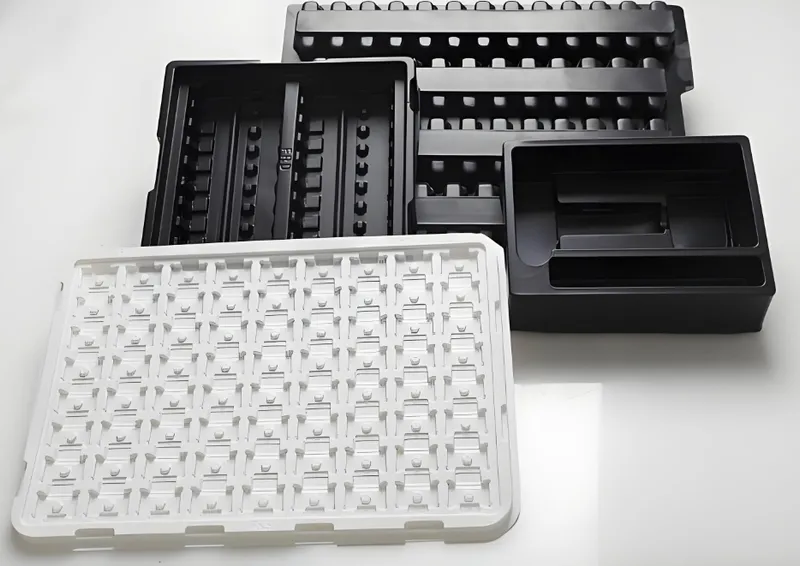
Material Selection
Material properties (e.g., thickness, UV resistance) dictate suitability. Thicker sheets allow deeper draws but raise costs.
Mold Design
Molds must include draft angles (1-2°) and avoid sharp corners to ensure easy removal and uniform thickness.
Temperature Control
Precise heating ensures pliability without degrading the plastic.
Material choice impacts vacuum forming outcomes.True
Different plastics offer unique properties, influencing strength, flexibility, and application.
What Are the Applications of Vacuum Forming?
Vacuum forming serves a wide range of industries with tailored solutions.
Vacuum forming produces parts for automotive, medical, packaging, consumer goods, and industrial uses, balancing cost and performance.
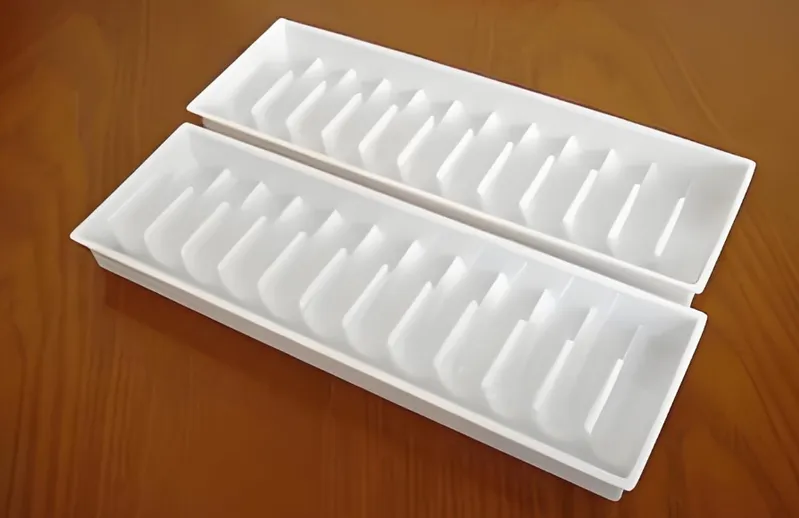
-
Automotive: Dashboards, trim.
-
Medical: Device enclosures, sterile packaging.
-
Packaging: Blister packs, trays.
-
Consumer Goods: Toys, displays.
-
Industrial: Machine covers.
Vacuum forming is limited to prototyping.False
It’s used for both prototypes and production parts across industries.
How Does Vacuum Forming Compare to Other Methods?
Vacuum forming stands out but has trade-offs compared to alternatives.
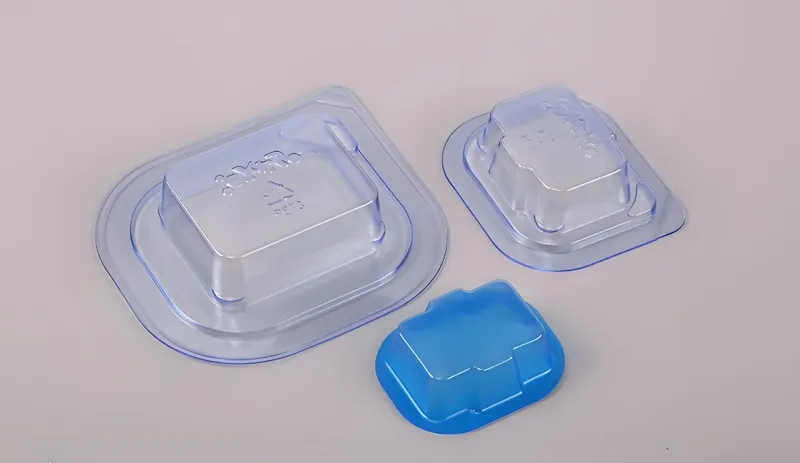
Vacuum forming excels in cost and speed for large parts but lacks the precision of injection molding for complex designs.
| Method | Pros | Cons |
|---|---|---|
| Vacuum Forming | Cost-effective, large parts | Limited to single-sided molds |
| Injection Molding | High precision, complex parts | Expensive molds, high volume |
| Blow Molding | Hollow parts | Limited shapes |
Vacuum forming is less precise than injection molding.True
It struggles with tight tolerances and intricate details.
Conclusion
Belgium’s top vacuum forming factories—BTL Plastics, Vitalo Group, AB Flexibles, ABS Plastics NV, and C.M.K. Kunststoffen—offer specialized solutions6 for diverse needs. Vacuum forming’s affordability7, speed, and versatility make it a go-to process for industries worldwide. Whether you’re designing packaging or industrial components, understanding this technology can unlock efficient manufacturing options.
-
Learn about the manufacturing process of vacuum forming to appreciate its efficiency and versatility in creating custom parts. ↩
-
Discover how plastic sheets are integral to vacuum forming, enhancing your knowledge of this manufacturing technique. ↩
-
Explore this link to gain a deeper understanding of vacuum forming, its applications, and benefits in various industries. ↩
-
Discover the process behind custom plastic solutions and how they cater to specific industry needs, ensuring quality and innovation. ↩
-
Learn about thermoforming techniques and their applications in creating diverse products, crucial for many manufacturing sectors.benefits in various industries. ↩
-
Learn about specialized solutions that can cater to unique manufacturing needs, improving efficiency and product quality. ↩
-
Discover insights on how affordability in manufacturing can lead to better resource allocation and increased competitiveness. ↩

